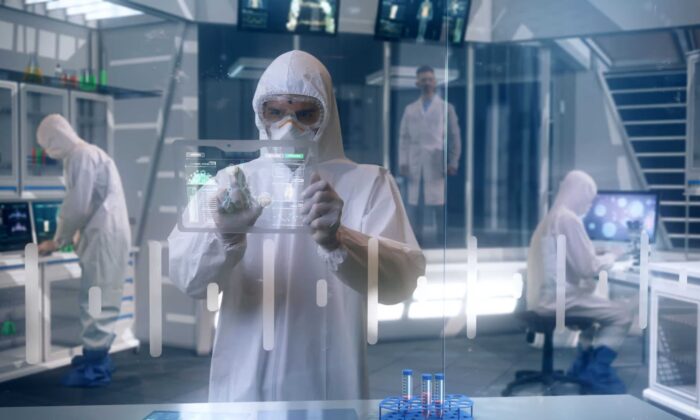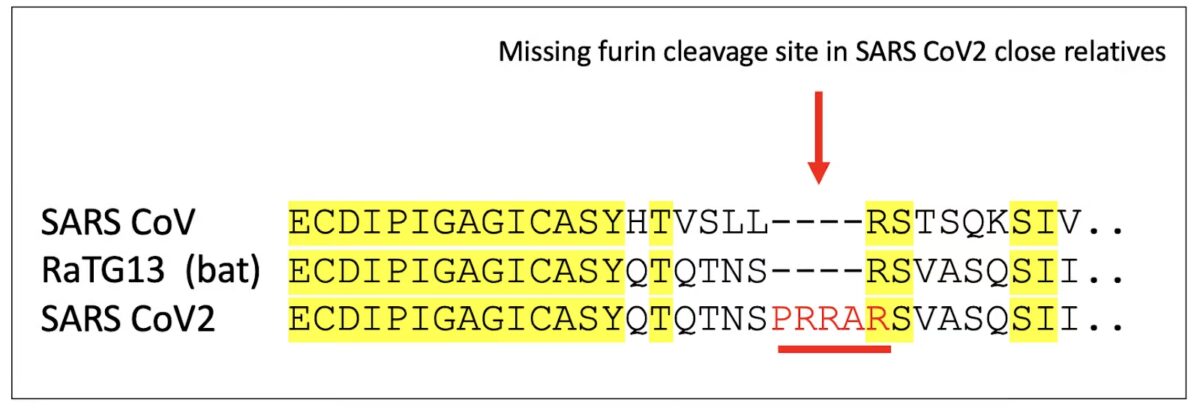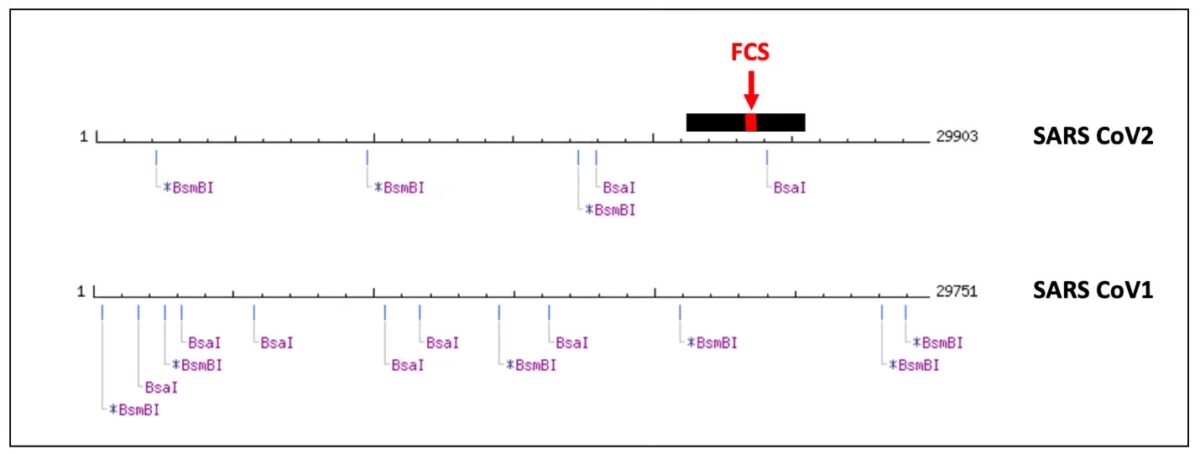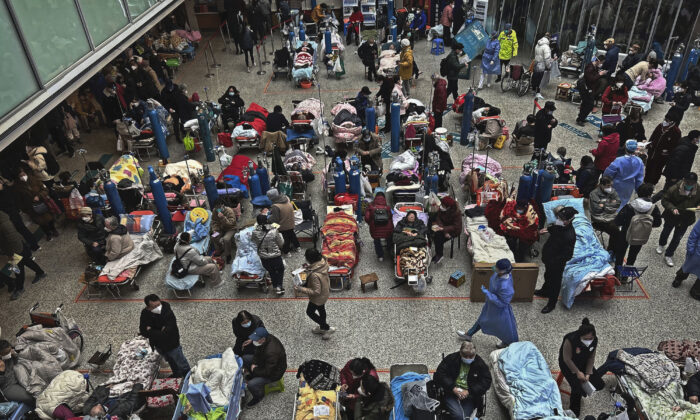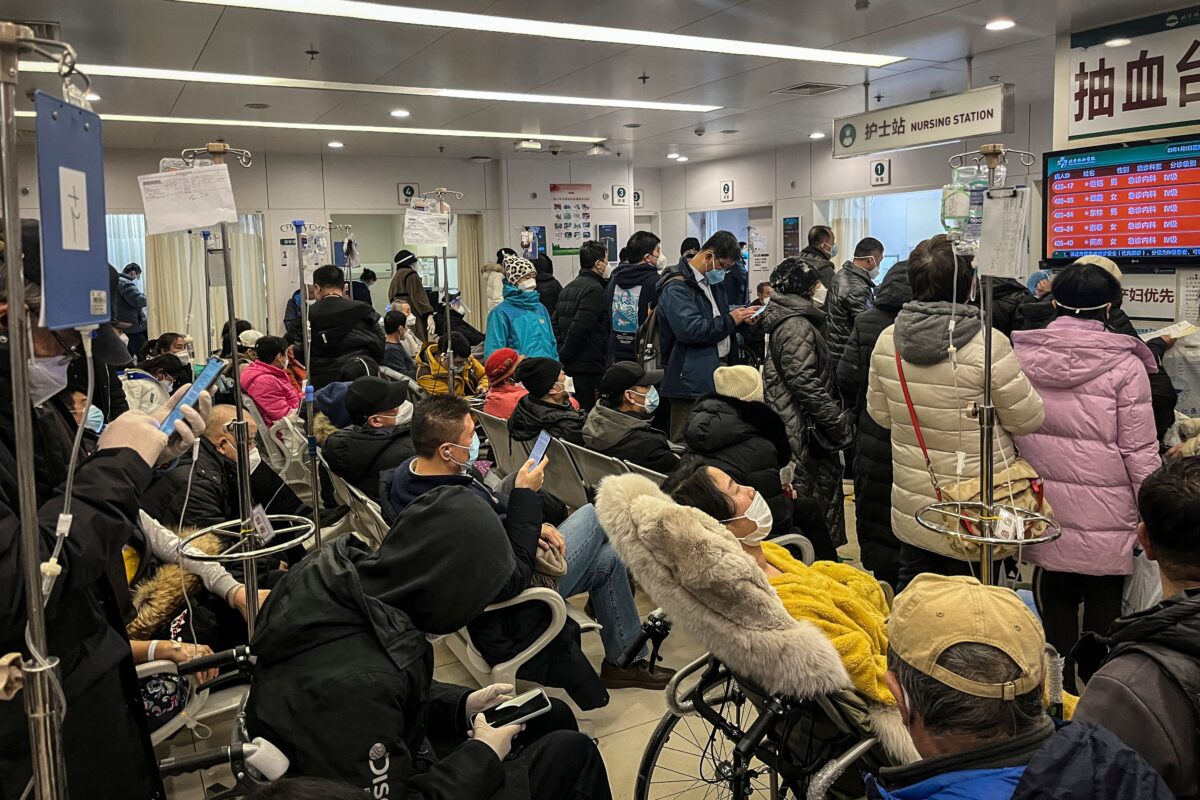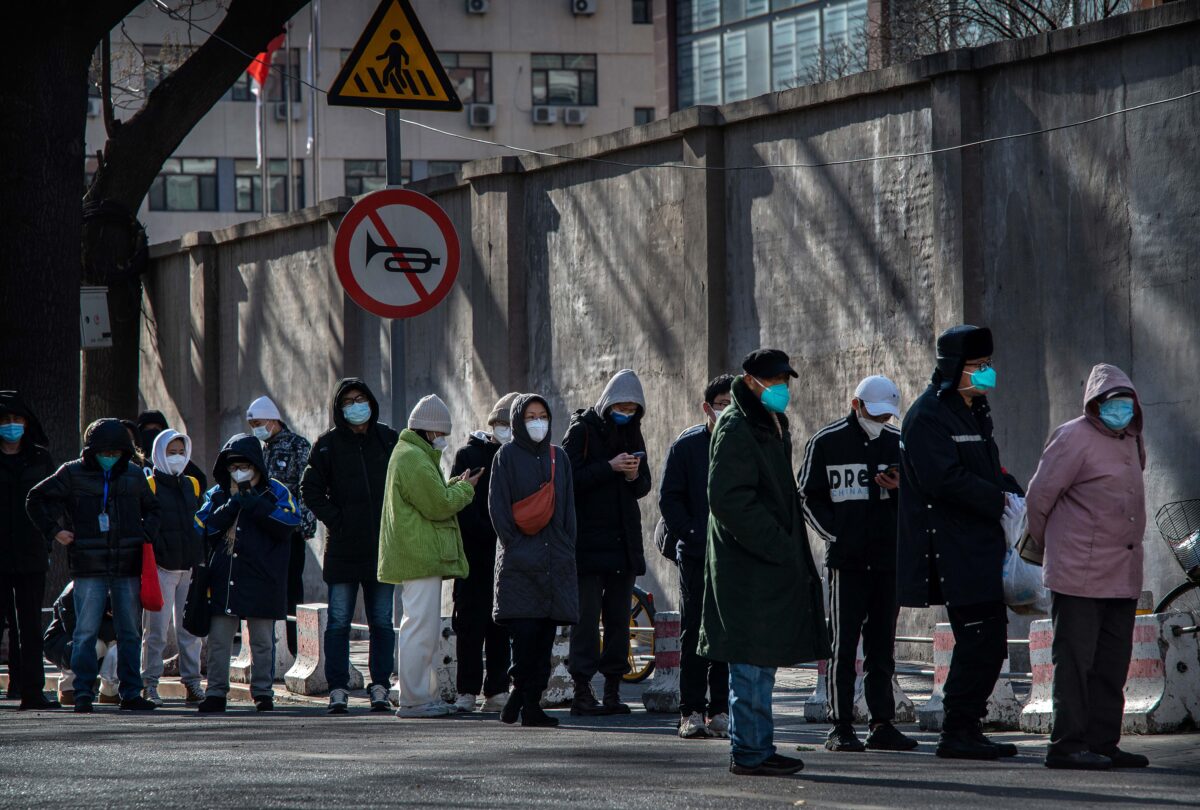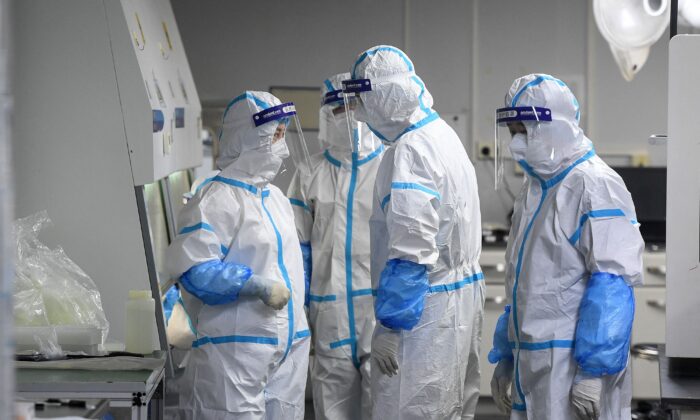February 7, 2023 Updated: February 7, 2023
News Analysis
Between 2014 and 2019, U.S. tax dollars were funneled to the Wuhan Institute of Virology via EcoHealth Alliance. Given that U.S. scientists have far more virology expertise than the Chinese, this begs an obvious question: what type of research were U.S. tax dollars paying for in Wuhan, China? Dr. Fauci’s surprising statement in an interview might provide the short answer to this question: “You don’t want to go to Hoboken, NJ or Fairfax, VA to be studying the bat-human interface that might lead to an outbreak, so you go to China.”
Given what we’ve endured for the past three years, Fauci’s “so you go to China” comment suggests that he hadn’t considered the global implications of a highly transmissible coronavirus leaking from a Chinese lab plagued by serious safety issues.
Unwilling to admit that he, EcoHealth Alliance, and their Chinese collaborators, are suspects in one of the largest crimes against humanity, Fauci instead opted to conspire with his boss, Francis Collins, to declare “lab leak” a “destructive conspiracy” that must be “put down.” Sadly, it’s clear that from the beginning, these two distinguished scientists made up their minds about virus origin without evidence from both sides of the debate.
Even worse, renowned scientists that rely on Fauci for their research funding, fearful of sanctions being placed on their life’s work, rallied around the “anti-lab leak” stance. One of the premier scientific journals, Science, whose political bias has become very apparent, attempted to provide legitimacy to Fauci’s position by publishing a paper by authors that claimed “dispositive evidence” that SARS-CoV-2 emerged from an animal at the Wuhan market. This paper allegedly “crushed” the lab-leak hypothesis, despite leaving much room for debate.
The good news is that Big Tech, scientific journals, and most media sources were forced to stop censoring countervailing evidence as it reached critical mass and began spilling over into the public domain. Far from being a “conspiracy,” there is a lot of evidence that strongly suggests SARS-CoV-2 is an engineered virus that spread from a Wuhan virology lab. Before getting into the evidence that SARS-CoV-2 was engineered and leaked from a lab, let’s start a debate around the “dispositive evidence” that SARS-CoV-2 is natural and emerged from the Wuhan market.
The “market origin hypothesis” is based on four debatable premises
The entirety of the “dispositive evidence” for market origin cited by Dr. Fauci and others can be summed up as follows: 1) “Early” cases allegedly lived near the market, 2) “early” SARS-CoV-2 lineages were allegedly associated with the market, 3) wild animals susceptible to COVID-19 were sold at the market, and 4) positive SARS-CoV-2 samples were found in the environment around the market and were allegedly “linked to human cases.” For many reasons, some of which are discussed here, none of this evidence is anywhere near “dispositive.” This is why reviewers forced the authors to remove the phrase “dispositive evidence” as a requirement for publication.
Did “early cases” really live near the market?
The Science paper relied on a joint World Health Organization (WHO)-China report to define “early cases” as those that occurred in December 2019. However, the joint WHO-China report also states: “Based on molecular sequence data, the results suggested that the outbreak may have started sometime in the months before the middle of December 2019.”
This statement seems more in line with other evidence that the pandemic started earlier than December 2019. Urgent communications from the highest levels of the Chinese government circulating at the Wuhan Institute of Virology in November 2019 reported a “complex and grave situation” at the lab. Was this “grave situation” the start of a SARS-CoV-2 “lab leak” unfolding in real-time, weeks before the rest of the world was made aware of the imminent pandemic?
There were also multiple reports from Chinese media and even the venerable Lancet that documented initial cases started before December 2019, as well as lab-based evidence of international spread as early as November 2019. Furthermore, shouldn’t we be alarmed that a group led by Chinese military scientists applied for a COVID-19 vaccine patent in February 2020?
If the first COVID-19 cases really were in December 2019, this means that inexperienced Chinese military researchers somehow managed to produce a COVID-19 vaccine based on traditional, less efficient methodology, in a little over a month. For comparison, it took vaccine giant Pfizer about 9 months to produce their vaccine based on more efficient mRNA methodology. Accurately pinpointing the true start date of the pandemic would allow us to assess how meaningful the “early cases” data are. If countervailing evidence is correct and cases that preceded December 2019 were missed or ignored, then a dataset beginning in December would most likely lead to flawed conclusions about pandemic origin.
Were “early virus lineages” really associated with the market?
In perhaps the clearest evidence of a crime scene coverup, Chinese scientists quietly removed from public databases at least 13 genome sequences representing the earliest SARS-CoV-2 strains. There is no legitimate reason for doing that. Fortunately, the files had been backed up before they were removed, allowing Dr. Jesse Bloom to be the first to retrieve them from Google Cloud and analyze them.
This is proof that the Science paper many claimed to have “crushed” the lab leak was unlikely to be fully representative of the viruses spreading at the start of the pandemic. Adding to the intrigue, one of the authors of the Science paper attempted to intimidate Dr. Bloom so he would not publish his findings. If the evidence for a natural origin of SARS-CoV-2 is so “dispositive,” why would anyone feel the need to censor an expert like Dr. Bloom?
Animals susceptible to COVID-19 were sold at the market but none tested positive
Some of the animals trafficked at the market had been experimentally infected with SARS-CoV-2 in labs or deemed theoretically susceptible based on the presence of compatible receptors. However, the WHO-China Report revealed that none of the 457 samples taken from 188 animals at the market tested positive for SARS-CoV-2. A criticism of these negative results is that the market was “under-sampled.” The SARS-CoV-1 pandemic of 2003–2004 spread around the world causing about 8,000 documented infections, resulting in about 800 deaths. Chinese scientists mobilized immediately and within a few months discovered an identical virus that naturally occurs in palm civet cats that were sold in Chinese markets.
Yet here we are, three years later, thousands of additional animals have been sampled, millions of genomic sequences analyzed, and nothing close to SARS-CoV-2 has yet to be detected in nature. Why is that?
Positive environmental samples found at the market were taken too late to infer virus origin
SARS-CoV-2-positive environmental samples were detected at the market. However, the samples were taken between January and March 2020. By January, the virus had likely been spreading in Wuhan for more than a month, and had already spread internationally, so how much can we deduce from these samples taken from the heavily trafficked market, weeks after the pandemic started? In fact, those responsible for collecting the samples concluded, “The market might have acted as an amplifier due to the high number of visitors every day.”
In other words, infected people most likely entered the crowded market and spread the virus. It’s notable that many of the positive samples came from vendor stalls in which “aquatic products,” seafood, and vegetables were sold. None of these products could be a natural reservoir for SARS-CoV-2. In fact, the WHO-China report concludes that many of the environmental samples reflect “contamination from cases” (i.e., infected people) given how widely distributed the virus was by then.
The following is a review of some of the lab-based and circumstantial evidence supporting “lab leak.” Hopefully, this analysis will lay the foundation for honest, thoughtful discussion, leading to a true understanding of the origin of SARS-CoV-2. If we can’t have honesty, how will we ever minimize the chances of this happening again?
Early strains of SARS-CoV-2 were unnaturally human adapted
The “natural origin” hypothesis contends that SARS-CoV-2 spilled over into humans from an animal in December 2019. A virus that so recently jumped to humans from an animal should not bind to human cells with higher affinity than the animal host it came from. However, at the beginning of the pandemic, Dr. Nikolai Petrovsky’s lab made the startling discovery that the earliest known strains of SARS-CoV-2 were unnaturally human-adapted.
In fact, these strains showed highest affinity for human cell receptors over receptors from bats, pangolins, and about eleven other animals known to harbor coronaviruses. Dr. Petrovsky submitted this important research to a top journal, Nature, in August 2020. In an egregious example of censorship, Nature delayed publishing the paper until June 2021, corresponding to when Dr. Fauci finally admitted that a lab leak could have started the pandemic.
There was financial motivation and established methodology for creating pandemic viruses
A rejected 2018 grant proposal submitted to DARPA that includes EcoHealth Alliance and Wuhan Institute of Virology (WIV) collaborators gives us enough information to figure out the motivation and methodology that likely created SARS-CoV-2. The primary goal of the grant was to create a “complete inventory” of SARS-like coronaviruses taken from several bat caves in China.
What follows is a streamlined version of the workflow proposed by the researchers: 1) add the spike proteins from these novel bat coronaviruses to a previously characterized SARS-like bat coronavirus core, and insert genetic modifications to spike proteins for enhanced infectivity if necessary, 2) infect “humanized” mice with these lab-made viruses, 3) flag chimeric viruses capable of infecting the mice as potential pandemic strains, and 4) prepare “spike” protein vaccines from these potential pandemic strains and use them to “immunize” bats in caves (Fig. 1).

The authors of the DARPA proposal discuss the importance of spike protein cleavage by human enzymes such as furin in the ability of coronaviruses to spread optimally and become pandemic strains. Notably, they proposed to insert “human-specific cleavage sites” (e.g., furin cleavage site, FCS) in spike proteins that lack the functional cleavage sites and then “evaluate growth potential” of the modified viruses in human cells.
They further proposed to modify cleavage sites in highly abundant, low-risk SARS-like viruses taken from Chinese bat caves. These studies are precisely the type of work that could accidentally or intentionally create pandemic viruses. Although the proposal states that chimeric virus work would be done at the University of North Carolina, by Fauci’s own admission, “I can’t guarantee everything that’s going on in the Wuhan lab, we can’t do that.” Furthermore, whenever a proposal this large (i.e., a $14 million request) is submitted, a great deal of the work will have already been done in advance to provide the “proof of concept” needed to sway reviewers.
The unique furin cleavage site in SARS-CoV-2 is evidence of genetic engineering
Many natural coronaviruses contain an FCS, so why is an FCS in SARS-CoV-2 so suspicious? The answer is that the genomes of thousands of coronaviruses from hundreds of different animals have been sequenced, and it’s clear that only distant relatives of SARS-CoV-2 have an FCS (see Fig 1A, Table 1).
The closest known sibling of SARS-CoV-2, a bat coronavirus named RaTG13, at best weakly infects human cells and lacks an FCS. SARS-CoV is another sibling of SARS-CoV-2, and like all the other known siblings, also lacks an FCS. Without an FCS, SARS-CoV-1 spread around the world in 2003–2004 but fizzled out after infecting about 8,000 people. A comparison of the short stretch of amino acids in the spike protein clearly reveals the missing FCS in these SARS-CoV-2 siblings (Fig. 2).
The unique genetic code of the SARS-CoV-2 furin cleavage site is evidence of genetic engineering
In coronaviruses, the blueprint for assembling proteins such as the surface spikes needed for infection lies in their RNA genome. The specific genomic sequence that encodes the short, all-important FCS within the SARS-CoV-2 spike is: CCU CGG CGG GCA CGU. Each three-letter bit of code (i.e., codon) dictates the specific amino acid to be used in building the FCS. Thus, CCU encodes “P” (for proline), CGG encodes “R” (for arginine), GCA encodes “A” (for alanine), and CGU also encodes “R.”
As you can see, there is redundancy in the genetic code (e.g., there are six different codons that a virus can use to encode arginine). The odd feature of the SARS-CoV-2 FCS is the double CGG codons. In fact, CGG is one of the rarest codons in human coronaviruses, yet there just so happens to be two right next to each other in the FCS, one of the most important sequences in the entire 29,903 “letters” making up the SARS-CoV-2 genome.
In fact, these are the only two CGG codons out of the 3,822 “letters” encoding the SARS-CoV-2 spike protein, and they are the only instance of a CGG-CGG doublet in any of the closest relatives of SARS-CoV-2. Notably, an arginine-rich FCS enhances the ability of coronaviruses to infect cells. At this point, it should not surprise anyone that CGG codons are the preferred code for genetic engineers who wish to produce an arginine-containing protein in human cells. It’s hard to deny that the CGG-CGG in the SARS-CoV-2 FCS is “smoking gun”-level evidence of genetic tampering.
Suspicious cut sites in the SARS-CoV-2 genome are evidence of genetic engineering
One method to create chimeric viruses utilizes specialized genome-cutting enzymes called “Endonucleases.” Endonucleases can be used to cut virus genomes in specific places, then the pieces can be strategically recombined to create chimeric viruses. Cut sites are randomly distributed in the genomes of natural viruses, but they can be precisely inserted or removed by scientists to make chimeric viruses in a laboratory. BsmBI and BsaI are two examples of endonucleases that co-authors of the DARPA grant used in previous work to make chimeric coronaviruses.
When present, the distribution of BsmBI and BsaI cut sites in viruses isolated from nature (e.g., SARS-CoV-1) are randomly distributed throughout the genome. Meanwhile, the distribution of cut sites in SARS-CoV-2 appear to be non-random and suggest genetic manipulation in a laboratory (Fig. 3). Curiously, a previous study involving EcoHealth Alliance described the insertion of two BsaI cut sites in a bat coronavirus called “WIV1” (i.e., Wuhan Institute of Virology 1), allowing scientists to make changes to the spike protein (see S9 Fig. Spike substitution strategy).
Two BsaI cut sites can be found in the SARS-CoV-2 genome (Fig. 3) in the same location as BsaI cut sites engineered into WIV1 back in 2017. The astronomical odds of this being coincidence cannot be overstated. According to the authors, “BsaI or BsmBI sites were introduced into the [spike]. Then any spike could be substituted into the genome of [lab engineered WIV1] through this strategy.” The same strategy might have been used in the construction of what would become the SARS-CoV-2 genome.
Strong circumstantial evidence supports the lab-leak hypothesis
Three years into the current pandemic, with thousands of animals sampled and millions of genome sequences analyzed, nothing close to SARS-CoV-2 has been found in nature. In stark contrast to 2003–2004, China’s early response to COVID-19 was “disappearing” scientists and journalists, obfuscation, and deflecting blame for starting the pandemic away from themselves onto everything from the US Army to imported frozen fish. This is exactly the type of behavior you might expect from a guilty party.
No one (except maybe the dishonest Chinese government) has ever denied that the epicenter of the COVID-19 pandemic is Wuhan, China. But what are the odds that such an explosive outbreak originated at the Wuhan market? This is just one market out of about 40,000 markets scattered around China, and it happens to be a few miles away from a lab that in 2017 became the first high-security virology lab on the Chinese mainland.
Here, a counterargument is that SARS-CoV-1 was a natural spillover from a market, so there’s precedence. But even the far less transmissible SARS-CoV-1, not long after being brought into the lab for study, eventually “leaked” with fatal consequences.
The origin of SARS-CoV-2 is the most important question of the pandemic, with implications that extend exponentially beyond scoring political points. At the start of the pandemic, even the journal Nature was sounding the alarm about the increasing role China’s military has been playing in secretive biomedical research in China. Yet, three years later all we have is obfuscation from China and Fauci and nothing even close to a natural ancestor of SARS-CoV-2. Throughout the pandemic, people parroted empty phrases like “Follow the science” without really following the science. So, let’s do that, let’s “Ffollow the science” (and the logic), because the genetic and circumstantial evidence for lab leak is impossible for any reasonable person to deny.
From the Brownstone Institute
Views expressed in this article are the opinions of the author and do not necessarily reflect the views of The Epoch Times.
https://www.theepochtimes.com/everything-you-need-to-know-about-the-lab-leak_5039551.html
